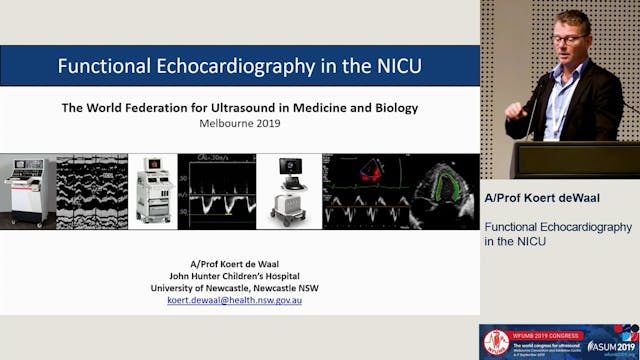Ovarian cancer screening: Where are we at now?
POINT OF CARE
•
27m
Screening for ovarian cancer has been attempted since the late 1980's. Most studies have involved the use of clinical examination CA 125 estimation and serial ultrasound scans. Large trials where conducted in the United Kingdom and thus far there has been no statistical evidence that these have reduced the incidence or death rate from ovarian cancer.
Even high risk patients with known mutations of BRCA 1 or 2 have not been found to benefit from surveillance ultrasound scans.
?There are a number of world health organisation criteria for screening tests which are unable to be satisfied for an effective screening test to be produced. Current research is identifying pre-invasive lesions which may be able to be used in the future and a discussion about imaging will be undertaken.
Up Next in POINT OF CARE
-
Point of care functional cardiac scan...
Patients in the neonatal intensive care often demonstrate clinical situations where hemodynamic compromise is common. Birth itself is the complex transition from placental blood flow to pulmonary blood flow as predominant provider of preload to the left heart, with redirection of blood flow over ...
-
Echo by ED physicians ñ Case vignettes
Cardiovascular examination is traditionally performed exclusively with the use of a stethoscope since its invention nearly 200 years ago. Such a clinical examination is notoriously unreliable and doesn't always convey sufficient information regarding the structural and physiological integrity of ...
-
Appendix techniques
Appendicitis remains the most common cause of acute abdomen requiring surgery. The clinical diagnosis could be challenging. Ultrasound (US) and computed tomography (CT) have been widely used as diagnostic tools for appendicitis. Unlike CT, US is usually readily available without ionizing radiatio...



